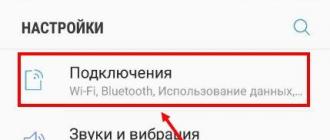My Greed for an expensive mouse and Laziness to go buy a new one rallied against me and forced me to make contact. I'll make a reservation right away that I am writing this article post-factum, I did not write anything down step by step, but I will show with an example how this is done. The quality of the photos leaves much to be desired, but the essence can be captured.
Equipment
Knife. Everything. I don’t have electrical tape or any tools at hand.An ordinary kitchen knife. Sharp enough to cut insulation without problem.
The original version included soldering with a government-owned soldering iron obtained at the university, however, due to some circumstances, which I will describe below, I had to redo everything.
Initial version
As I said, the cable broke at the very base. To get a little space, I cut the plug with a knife and stripped all four wires. He twisted the braid of the cable and turned it aside, after which he went to the university for a soldering iron. I was given an old soldering iron, a coil of millimeter-solder solder and a jar of flux. I have experience in soldering, so it turned out fine. The only drawback is that since all four wires are very short, located at the same level, and I did not have insulation, it turned out to be a kind of "rose" of wires sticking out in different directions. However, the test run was successful - the mouse came to life, and I, proud of myself, returned to the hostel.But there I was disappointed. Without going into details, most likely, my black and red wires were shortened and the laptop blocked the USB socket. Therefore, no matter what I did next, the mouse did not react.
Trying to figure it out, I began to sin on the braid (that it shortens the wires), I even cut it off, it did not help. In the end, I completely cut the plug and decided to do it all over again. It would have been worth restarting the computer and trying again, most likely the mouse would work. Who knows...

The connection is very small, I don't have a normal camera. It's just that all four wires stick out in a bundle from the plug and a corresponding wire is soldered to each. The braid is cut off because I thought she was shorting the wires. Never mind.
Connecting cables
Towards evening I took the mouse out of the drawer and set to work. First of all, I took a new plug from an unnecessary mini-USB cable.
USB cables are not much different from each other - four wires (black and red for power, white and green for information) and a braid. Therefore, any USB cable will work.
When repairing, I used the method described. In short - multicore cables are connected by a "ladder". Thus, the wires do not touch each other and the connection is thinner.
Using the remaining piece of wire as an example, I'll show you how to do this. First, carefully cut the top insulation to a length of about four to five centimeters. 
Unweave the braid and set it aside. 
Then we expose 4 wires with a "ladder" - only the very tip is red to twist; white is a little more authentic, so as not to touch red; then green. We clean the black farthest. We expose the other cable in the same way, only in a mirror image - only the tip is black, then green, white and red at the very base. Thus, we exclude the closure of the wires with each other. 
It remains only to connect the two cables together. We connect each wire with a twist. I hope you won't mix up the colors. After twisting, it is better to cut off the excess wires to avoid unnecessary contacts. 
In my version, I also covered the whole thing with a piece of upper insulation to avoid touching the braid. In the future, I plan to either get an electrical tape somewhere, or ask the girls for colorless varnish for isolation. 
After processing with electrical tape, of course, it will all take on a divine appearance, but for now the braid will hang in such a strange way. The connection is working, there are no extra contacts. The mouse works like new!
but
The mouse immediately refused to work. I was already completely desperate, I noticed a system message about violations of the USB-inputs. As I said, the original version shorted the contacts and the laptop cut off the USB inputs. After rebooting, the mouse worked again. Of course, the connection is short-lived, without electrical tape in any way, but the mouse works.Thanks for attention. Hope this article helped you.
P.S. this is my first article on Habré. Thanks for the invite!

Today, almost all modern and not only devices are equipped with usb connectors. A broken USB connector is a common problem resulting from accidental mechanical damage, such as damage during charging. If you are faced with such a problem, then this article will definitely help you.
To re-solder the USB connector yourself, you need some tools such as:
- any soldering iron with a power of 25 watts,
- tweezers,
- easily fusible tin,
- solder,
- small curly screwdriver,
- scalpel or knife with a thin blade,
- magnifier.
Below is a step-by-step look at how to disassemble your device. The most important thing is to do everything very carefully.
First of all, you need to unscrew all the fixing screws on your device. First, release the back cover by prying it open with a thin blade. By doing this, we release the body clamps from the grooves by tilting the knife towards the screen.
Secondly, after removing the cover on the device, be sure to ground your soldering iron. Then solder the wire to the common body, and then the other end of the wire to the body of the soldering iron itself. These actions are necessary in order to protect the gadget from accidental static electricity, which can damage its electronic components. You also need to make an anti-static wrist strap and ground it too.
ThirdlyIn order not to inadvertently close the electronic circuit and damage the components, you need to unsolder the wires from the battery.
And finally, unscrew all the fixing screws on the board and turn it over, thereby we get directly to the micro usb connector itself.
As you understand, DIY repair can be quite problematic. Soldering micro usb is not an easy task for the average user. If you do not want to risk, then bring your device to us, to Smartkit, and we will be happy to solve your problem for a small price and quickly.
Pinout of micro usb charging connector - The USB bus connector appeared around the beginning of the 1990s, and its main purpose was for use in consumer radio equipment. Today, the micro usb connector has become extremely popular not only in consumer devices, but also in professional multimedia devices. However, its “everyday” origins are clearly visible in the fact that these connectors are plug-in format installed on almost any audio-video equipment, without exception.
The first connectors differed from modern ones in their large dimensions, although its socket was normally installed in small-sized portable devices. Over time, the dimensions of USB connectors have taken on compact forms in various variants such as MINI-USB, MICRO-USB and just USB. These types of connecting devices made it possible to carry out its main functional purpose. At the same time, they significantly differed in size and ease of use from the previously created analogue.
The device and pinout of the micro usb connector for charging
The micro usb connecting device also consists of five contact pads, each pad has an insulated mounting wire. For accurate orientation of the connector when connected to the mating part of the connector, a special chamfer is made on the top of its shielding part. Connector pads are numbered from one to five and read from right to left. For clarity, this is shown in the picture below. The scheme for wiring the micro usb connector, as well as the purpose of its contacts isolated from each other, are shown in the table:
Pinout of micro USB by wire color
The shielding also serves as a wire, but is not soldered to a separate contact pad.
Modern connecting devices such as micro usb connectors have fairly good performance and a relatively low price. Therefore, given the presence in the trade of a huge number of various connecting wires of this type, the repair of such auxiliary equipment is extremely rare. But still, if you have to replace a defective connector socket, then pinout of the micro usb connector will not cause much trouble. Constructively well-made micro USB-connectors, even in spite of their miniature dimensions, they will not allow you to make gross mistakes in installation.
Now in devices you can often find usb connectors (u-es-bi, English Universal Serial Bus - "universal serial bus "). Due to accidental mechanical damage, for example, while the device is in charging mode, such a malfunction is often encountered - such as a break in the micro usb connector. You will learn how to solder the micro usb connector yourself in the article below.
If you love tinkering and know how to handle a soldering iron, then it will not be difficult for you to rewire the micro usb connector on the tablet yourself. To do this, we need tools: a 25-watt soldering iron, solder, easy fusible tin, tweezers, a small curly screwdriver, a scalpel or a knife with a thin blade, a magnifying glass.
How to disassemble a tablet (phone, laptop)?
The most important thing is that we do everything carefully and accurately!
For disassembly, we need:
- Set of screwdrivers;
- Tweezers;
- Scalpel or knife;
- Soldering iron.
Procedure.
Step 1. Unscrew all the fastening screws on the tablet or phone, remove the back cover by gently prying it off with a knife or scalpel, thereby freeing the case latches from the grooves, tilting the blade towards the screen.

Step 2. After removing the cover on the tablet (phone), you need to ground the soldering iron, solder the wire to the common body (minus) and then the other end of the wire to the body of the soldering iron itself. This must be done in order to protect the tablet from accidental static electricity, which can damage its electronic components. You should also make an antistatic wrist strap and also ground it.
Step 4. After that, unscrew all the mounting screws on the board and turn it over, thereby we get directly to the micro usb connector itself.
List of USB connector faults
1. Micro usb connector has failed.
If the connector has become unusable and further repair is impossible, then it should be replaced. To do this, we need to find a knowingly working one, you can use an unnecessary or faulty cell phone and unsolder the micro usb connector from the phone. To do this, take a scalpel and push it between the board and the connector, heating the mounting tabs of the micro usb connector, gradually lifting one side, then the other. Further, after the fastening tabs are soldered from the board, you need to take tweezers, since the connector heats up quickly, you should not overheat, because the plastic parts of the micro usb connector can melt and deform. After that we unsolder the connector pins, they should be heated all at the same time. Pay attention to the installation, smd parts may be near the connector and if soldering is not neat, they can be soldered or burned, be careful and therefore the soldering iron tip should be thin. The sequence for unsoldering the connector is the same and dismantling the micro usb connector on the tablet should be done in a similar way.
2.Micro usb connector is functional, but disconnected from the main board.
In this case, it is worth paying attention to the integrity of the tracks themselves, for this we take a magnifying glass and inspect the installation, if the tracks are intact on the board, then well, if not, then you will have to restore them. It is necessary to find all the ends of the torn off paths and carefully clean them with a scalpel (clean the varnish), then tin with a soldering iron. After that, we take the micro usb connector itself and solder the mounting tabs of the connector to the board, I advise you to pre-glue the connector to the board before soldering, this will reduce the likelihood of repeated breakage. There is little left, to solder the leads, if the tracks are intact, then it will not be difficult, but if not, we do the following: we take thin copper wires (one hair of a stranded thin wire) and solder between the leads of the tracks and the connector. If for some reason it was not possible to restore all the tracks (the track under the electronic part is cut off and there is no way to track its location). In this case, it will be possible to do only for charging the tablet, while we need to restore only two tracks, two extreme outputs to the micro usb connector, the only drawback is the inability to connect the tablet to a computer and external devices.
The USB interface began to be widely used about 20 years ago, to be precise, in the spring of 1997. It was then that the universal serial bus was implemented in hardware on many motherboards in personal computers. At the moment, this type of connection of peripherals to a PC is a standard, versions have been released that significantly increase the speed of data exchange, new types of connectors have appeared. Let's try to understand the specifications, pinouts and other features of USB.
What Are the Benefits of Universal Serial Bus?
The introduction of this connection method made it possible:
- Quickly connect various peripheral devices to your PC, from the keyboard to external hard drives.
- Fully use the "Plug & Play" technology, which simplified the connection and configuration of peripherals.
- Rejection of a number of outdated interfaces, which had a positive effect on the functionality of computing systems.
- The bus allows not only data transmission, but also power supply of connected devices, with a load current limitation of 0.5 and 0.9 A for the old and new generation. This made it possible to use USB to charge phones, as well as connect various gadgets (mini fans, lights, etc.).
- It became possible to manufacture mobile controllers, for example, USB RJ-45 network card, electronic keys for entering and exiting the system
Types of USB connectors - the main differences and features
There are three specifications (versions) of this type of connection, partially compatible with each other:
- The very first version, which became widespread - v 1. It is an improved modification of the previous version (1.0), which practically did not leave the prototype phase due to serious errors in the data transfer protocol. This specification has the following characteristics:
- Dual-mode data transfer at high and low speeds (12.0 and 1.50 Mbps, respectively).
- The ability to connect more than a hundred different devices (including hubs).
- The maximum cord length is 3.0 and 5.0 m for high and low exchange rates, respectively.
- The rated bus voltage is 5.0 V, the permissible load current of the connected equipment is 0.5 A.
Today this standard is practically not used due to its low bandwidth.
- The currently dominant second specification .. This standard is fully compatible with the previous modification. A distinctive feature is the presence of a high-speed data exchange protocol (up to 480.0 Mbit per second).
Due to full hardware compatibility with the junior version, peripheral devices of this standard can be connected to the previous modification. However, this will reduce the throughput by up to 35-40 times, and in some cases even more.
Since there is full compatibility between these versions, their cables and connectors are identical.
Note that, despite the bandwidth indicated in the specification, the real data exchange rate in the second generation is slightly lower (about 30-35 MB per second). This is due to the peculiarity of the protocol implementation, which leads to delays between data packets. Since modern drives have a read speed four times higher than the bandwidth of the second modification, that is, it did not meet the current requirements.
- The 3rd generation universal bus was specially designed to solve the problem of insufficient bandwidth. According to the specification, this modification is capable of exchanging information at a speed of 5.0 Gbps, which is almost three times higher than the read speed of modern drives. Plugs and sockets of the latest modification are usually marked with blue to facilitate identification of the belonging to this specification.

Another feature of the third generation is an increase in the rated current to 0.9 A, which allows powering a number of devices and eliminating the need for separate power supplies for them.
As for compatibility with the previous version, it has been partially implemented; details of this will be described below.
Classification and pinout
Connectors are usually classified by type, there are only two of them:

Note that such convectors are only compatible between earlier modifications.

In addition, there are extension cords for the ports of this interface. At one end of them there is a type A plug, and at the second there is a socket for it, that is, in fact, a "mom" - "dad" connection. Such cords can be very useful, for example, to connect a USB flash drive without getting under the table to the system unit.

Now let's look at how the contacts are wired for each of the types listed above.
Pinout of usb 2.0 connector (types A and B)
Since the plugs and sockets of earlier versions 1.1 and 2.0 do not physically differ from each other, we will show the wiring of the latter.
 Figure 6. Wiring the plug and socket of the type A connector
Figure 6. Wiring the plug and socket of the type A connector Designation:
- A - nest.
- B - plug.
- 1 - power supply +5.0 V.
- 2 and 3 signal wires.
- 4 - mass.
In the figure, the coloring of the contacts is given by the colors of the wire, and corresponds to the accepted specification.
Now let's look at the wiring of the classic socket B.

Designation:
- A is a plug that connects to a socket on peripheral devices.
- B is a socket on a peripheral device.
- 1 - power contact (+5 V).
- 2 and 3 - signal contacts.
- 4 - contact of the wire "mass".
The colors of the contacts correspond to the accepted coloring of the wires in the cord.
USB 3.0 pinout (types A and B)
In the third generation, peripheral devices are connected via 10 (9, if there is no braided shield) wires, respectively, the number of contacts is also increased. But they are positioned in such a way that it was possible to connect devices of earlier generations. That is, the +5.0 V, GND, D + and D- pins are located the same as in the previous version. The wiring of the type A socket is shown in the figure below.
 Figure 8. Pinout of the Type A connector in USB 3.0
Figure 8. Pinout of the Type A connector in USB 3.0 Designation:
- A - plug.
- B - nest.
- 1, 2, 3, 4 - connectors fully correspond to the pinout of the plug for version 2.0 (see B in Fig. 6), the colors of the wires also match.
- 5 (SS_TX-) and 6 (SS_TX +) connectors for SUPER_SPEED data transmission wires.
- 7 - ground (GND) for signal wires.
- 8 (SS_RX-) and 9 (SS_RX +) connectors for receiving data using the SUPER_SPEED protocol.
The colors in the illustration correspond to those generally accepted for this standard.
As already mentioned above, an earlier plug can be inserted into the socket of this port, respectively, the throughput will decrease. As for the third-generation universal bus plug, it is not possible to fit it into the early release sockets.
Now let's look at the pin wiring for a type B socket. Unlike the previous type, such a socket is incompatible with any plug of the earlier versions.

Legend:
A and B are plug and socket, respectively.
Digital signatures for contacts correspond to the description in Figure 8.
The color is as close as possible to the color coding of the wires in the cord.
Micro usb connector pinout
To begin with, we present the wiring for this specification.

As you can see from the picture, this is a 5 pin connection, both in the plug (A) and in the socket (B) there are four contacts involved. Their purpose and digital and color designation correspond to the accepted standard, which was given above.
Description of the micro USB connector for version 3.0.
For this connection, a 10 pin connector is used. In fact, it consists of two parts, 5 pin each, and one of them fully corresponds to the previous version of the interface. This implementation is somewhat confusing, especially considering the incompatibility of these types. Probably, the developers planned to make it possible to work with connectors of early modifications, but subsequently abandoned this idea or have not yet implemented it.

The figure shows the pinout of the plug (A) and the appearance of the socket (B) of the micro YUSB.
Pins 1 to 5 fully correspond to the second generation micro-connector, the purpose of other pins is as follows:
- 6 and 7 - data transmission using high-speed protocol (SS_TX- and SS_TX +, respectively).
- 8 - mass for high-speed information channels.
- 9 and 10 - data reception via high-speed protocol (SS_RX- and SS_RX +, respectively).
Mini USB pinout
This connection option is used only in earlier versions of the interface, in the third generation this type is not used.

As you can see, the wiring of the plug and socket is almost identical to the micro YUSB, respectively, the color scheme of the wires and the contact numbers also coincide. Actually, the differences are only in shape and size.
In this article, we have given only standard types of connections, many manufacturers of digital equipment practice the implementation of their standards, there you can find connectors for 7 pin, 8 pin, etc. This introduces certain difficulties, especially when it comes to finding a charger for a mobile phone. It should also be noted that manufacturers of such "exclusive" products are in no hurry to tell how the USB pinout is made in such contactors. But, as a rule, this information is easy to find on thematic forums.






